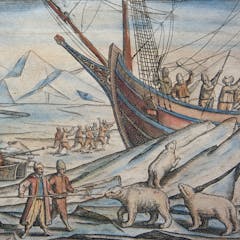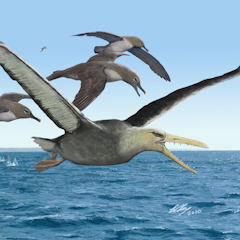
Articles on Museums
Displaying 61 - 80 of 207 articles

Media coverage of the recent Dr. Seuss controversy are rooted in both a lack of awareness of the challenges and realities of maintaining collections and a false understanding of history.

The proposal that monuments must be preserved at any cost hinders rather than helps institutions handle the decolonisation of their collections.

Do you see a fearsome predator? A fragile icon of impending extinction? What these arctic giants have stood for in art has continually evolved.

New research shows COVID-19 threw existing inequalities into sharp relief: well-funded institutions were able to move their projects online, while smaller galleries struggled.

Emerging ‘mixed reality’ technology promises to bring history back to life.

Specimen preservation means researchers don’t need to reinvent the wheel each time they ask a new question, making it critical for the advancement of science. But many specimens are discarded or lost.

A spear-thrower, a shell, a bowl, a vase, a bucket. Five very different items tell us much about the history of collecting, the role of Indigenous experts and the shadow of colonial violence.

How museums can reimagine themselves in the context of the climate crisis.

Paleontologists have discovered fossil remains belonging to an enormous ‘toothed’ bird that lived for a period of about 60 million years after dinosaurs.

We surveyed 1461 Australians and discovered many are museum regulars — but it’s family history that has broad appeal.

Microfossils offer up an array of information to scientists, like the time periods in which they lived and how environments have changed.

Too often in conversations about cultural centres, the incredible resources already available are neglected.The Berndt Museum, in Perth, is a collection of national and international significance.

Museums around the world have been grappling with the issue of diorama removal.

Understanding the different types of visitors and how they navigate museums can help these institutions reopen safely.

Cultural institutions are puzzling out to to make their buildings exciting and safe at the same time.

Genetic information that could help finger the next infectious threat is stored in museums around the world.

The COVID-19 pandemic has closed museums and cultural sites worldwide. Meanwhile, curators are already working hard to preserve the current moment so that future generations may understand it.

Tomanowos, aka the Willamette Meteorite, may be the world’s most interesting rock. Its story includes catastrophic ice age floods, theft of Native American cultural heritage and plenty of human folly.

Galleries and musuems are rapidly moving online in response to social distancing measures, but the digital divide means regional and remote organisations could be left behind.

COVID-19 is dragging some arts institutions into the 21st century. Others are already well down this path. What we win and lose when culture goes online and a bunch of links you can enjoy today.
